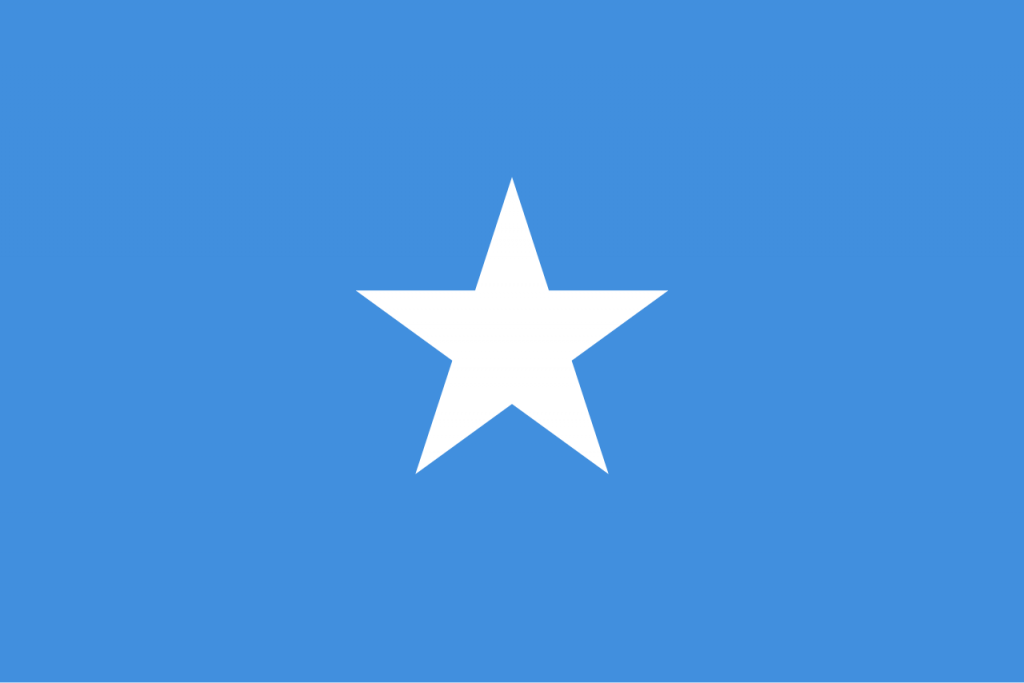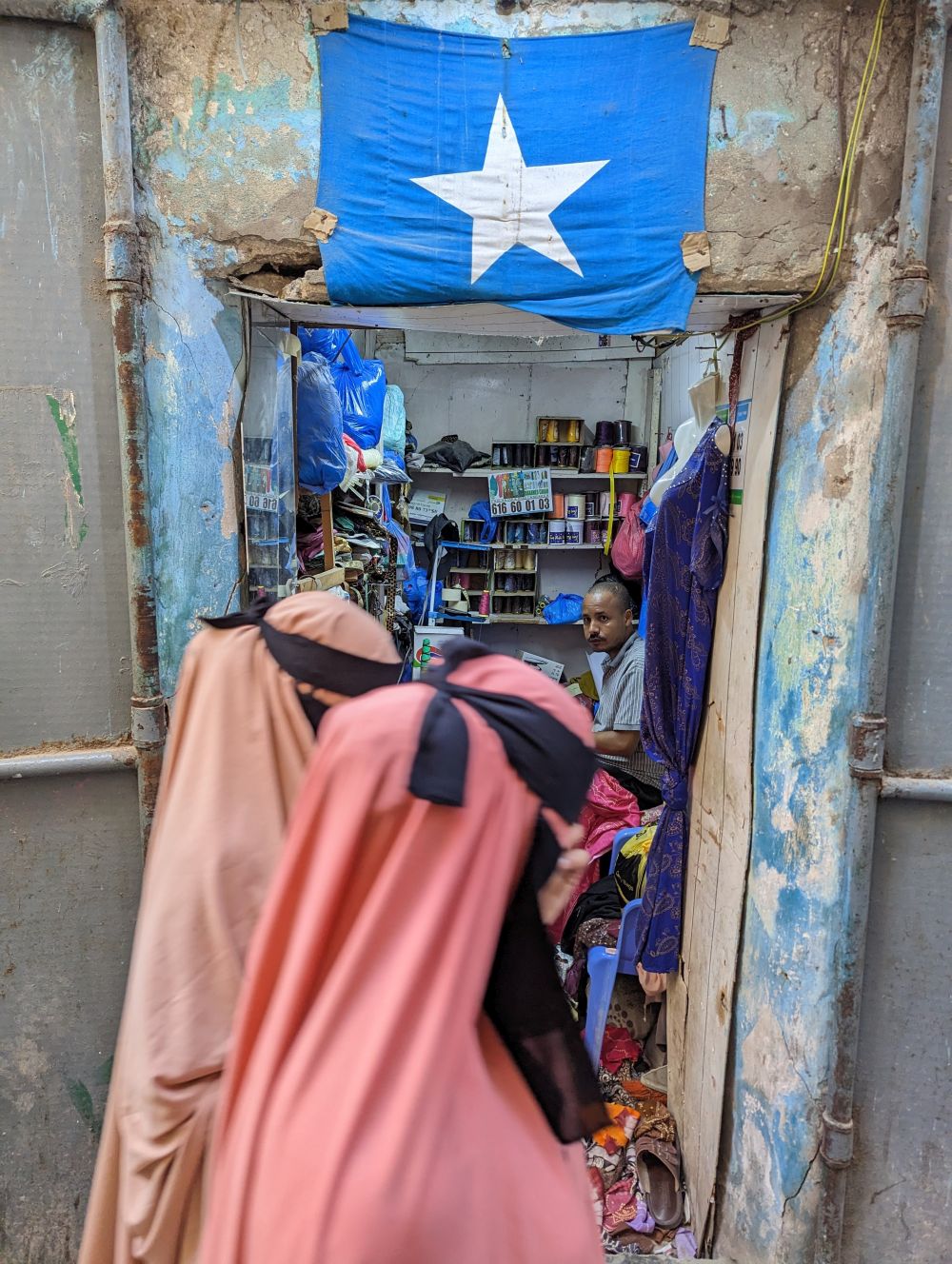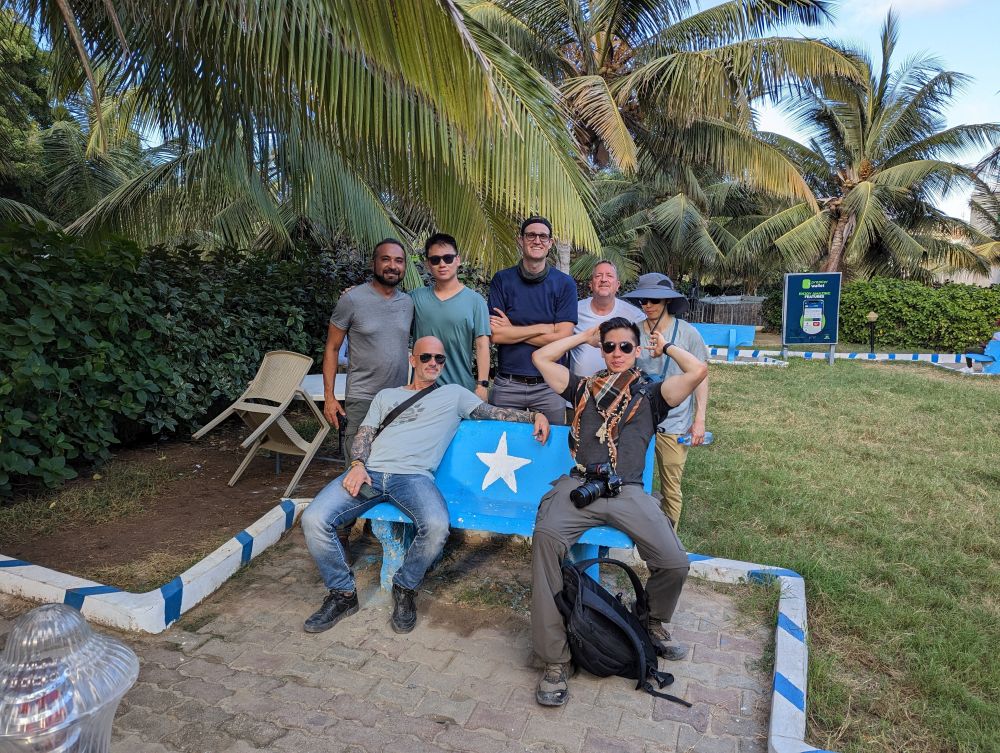The Somalia Flag is a memorable symbol, especially in the context of other African flags. While many nations use tricolour stripes, and incorporate their national seal onto the flag’s design, Somalia does things differently. Instead, their national banner stands apart, with its minimalist and impactful design.

According to scholars, there are five basic requirements needed to produce a great national flag. Firstly, simplicity is key, and it should be easy enough for a child to draw from memory. The design should also incorporate meaningful symbolism, with images, colours, or patterns that represent its significance. In addition, use only two or three basic colours that contrast well. As well, avoid including text or seals, as these clutter the design. Lastly, ensure the flag is distinctive, yet related enough to others to show connections if appropriate.
Despite Somalia’s many challenges, the designers of its national flag seemed to have intuitively followed these key design principles. This was evident in their creation of the flag in 1954, reflecting simplicity and meaningful symbolism.
Table of Contents
The Design and Symbolism of the Flag of Somalia
The Somali flag consists of a light blue background with a white five-pointed star at its center. Designed by scholar Awale Liban in 1954, its simplicity belies its deep symbolism. Each of the five points of the white star represents regions historically inhabited by Somali people. These are:
- Djibouti (formerly French Somaliland)
- Somaliland (formerly British Somaliland)
- Somalia proper (formerly Italian Somaliland)
- The Ogaden region of Ethiopia
- The North Eastern Province of Kenya
Known as the “Star of Unity,” the flag was originally conceived as a unifying emblem for Somali people scattered across these regions. The light blue field holds its own significance, as it was inspired by the flag of the United Nations, symbolizing the UN’s role in Somalia’s journey to independence. Sadly, the UN has also had a role in Somalia’s more recent history, given the nation’s political instability.
Somalia’s Flag as a National and Ethnic Emblem
At its inception, the Somali flag served as an ethnic rather than purely national symbol. It was designed to embody the aspirations of Somalis to unite across borders created by colonialism.
This vision of “Greater Somalia” sought to bring together the people of the Somali Peninsula and beyond into a single political entity. For a time, the flag represented the dream of uniting the Somali people under one banner, transcending the artificial divisions imposed by colonial powers.


However, political realities have since altered this vision. With the emergence of independent and autonomous regions such as Somaliland – where it is actually illegal to fly the Somalia flag – the banner’s significance has shifted. While it remains the national flag of Somalia, its pan-Somali symbolism continues to resonate for many, reminding them of their shared cultural and historical heritage.
Historical Evolution of the Somalia Flag
The history of the Somali flag is intertwined with the broader history of the region, marked by colonial rule, independence movements, and internal conflicts.
Colonial Era Flags
During the colonial era, the Somali territories were governed by various European powers. Italian Somaliland flew the Italian tricolour, while British Somaliland adopted a flag reflecting British colonial symbols. After World War II, the administration of Somali territories shifted under international agreements. Italian Somaliland became a United Nations Trust Territory administered by Italy, while British Somaliland remained a protectorate.
Adoption of the Somali Flag
Somalia gained independence on July 1, 1960, with the unification of Italian Somaliland and British Somaliland. It was at this moment of national unification that the flag, designed by Awale Liban, was adopted as the official national emblem. This marked a turning point in Somali history, as the flag symbolized the aspirations of a newly independent nation seeking unity and sovereignty.
Breakaway Regions and New Flags
Over time, political divisions emerged within Somalia. Somaliland declared independence in 1991 and adopted its own flag to assert its autonomy. While unrecognized internationally, Somaliland’s flag represents its distinct identity. Similarly, other regions and movements have adopted alternative symbols, reflecting the fragmented political landscape of the Somali territories.
Contemporary Challenges
The Somali flag today is not the only flag flown within the country. Somalia faces ongoing challenges, including conflict with the militant group Al-Shabaab. This jihadist organization, which controls parts of the country, flies its own flag, resembling the black banners used by ISIS. The presence of competing flags within Somalia underscores the fractured nature of the state and the challenges of achieving unity under the national flag.
Cultural Significance and National Identity
Despite these challenges, the Somali flag remains a powerful cultural symbol. It represents not just the nation of Somalia but the broader identity of the Somali people. The flag’s design reflects a vision of unity, resilience, and hope, even in the face of political and social fragmentation.
Comparison with Other Flags
The Somali flag’s minimalist design sets it apart from many other African flags. While most African nations adopted tricolor or multi-striped designs inspired by the Pan-African movement, Somalia chose a simpler approach. Its use of a single colour and a central emblem reflects a focus on unity and clarity. The light blue background, reminiscent of the United Nations flag, further emphasizes themes of internationalism and peace.
How can I see Somalia’s Flag for Myself?
Reflecting the unique culture, history, and resilience of Somalia, Young Pioneer Tours has a deep interest in exploring the incredible stories and landscapes of this dynamic nation. While challenges remain, we are optimistic about expanding our opportunities to offer more immersive tours in the years ahead!

Currently, we visit Somalia twice a year, focusing on Mogadishu due to security concerns. We also offer tours to Somaliland, an ethnic Somali area yet one that has declared independence from the federal Somali state.
If you’d like to explore Somalia with us or have a custom trip in mind, visit our Somalia page or drop us an email here, and we’ll be thrilled to assist!





